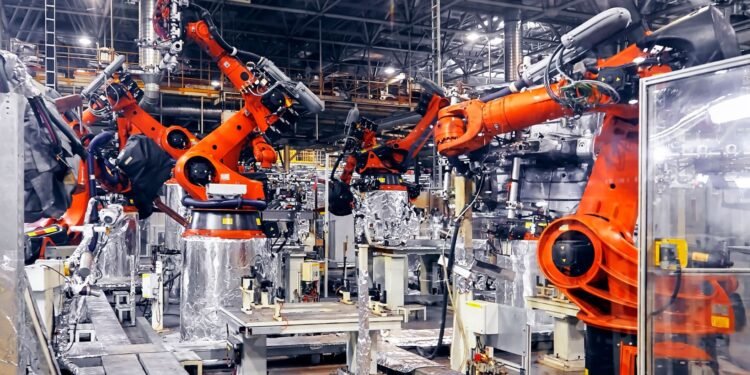What are Additive and Subtractive Manufacturing and how they’re Changing Modern Production
In recent years, science and technology have propelled the manufacturing industry to new heights. Over the years, two distinct methodologies that have revolutionized the manufacturing landscape and continue to transform various industries are additive manufacturing (AM) and subtractive manufacturing (SM).
Additive manufacturing (AM) involves constructing objects by adding material layer by layer, utilizing 3D printing technology. Subtractive manufacturing (SM), on the other hand, involves removing material from a workpiece to achieve the desired shape or form. Although these processes function differently, they have both impacted the manufacturing industry in unique ways. Let’s explore some aspects of the evolution of modern production and compare and contrast additive and subtractive manufacturing processes to highlight their respective advantages, applications, and future trends.
History of Manufacturing
To truly understand the innovation of additive and subtractive manufacturing, we must journey back to the origins of manufacturing itself. Ancient civilizations relied heavily on handcrafting and blacksmithing techniques, where skilled artisans meticulously shaped raw materials into functional objects.
However, it was the Industrial Revolution that transformed the manufacturing landscape forever. The introduction of mass production techniques brought about a paradigm shift, enabling unprecedented levels of productivity. As technology progressed, additive and subtractive manufacturing processes continued to develop with the advancements in modern technology.
What is Additive Manufacturing (AM)
At its core, additive manufacturing involves building objects layer by layer using 3D printing technology. The process begins with a digital model, which is then translated into physical form through the deposition of material, typically plastic or metal, in a precisely controlled manner.
The advantages of additive manufacturing are manifold. Design flexibility allows for the creation of complex geometries and customized products. AM also substantially reduces material waste, making it an environmentally conscious choice. Industries such as aerospace, healthcare, and automotive have embraced AM, leveraging its capabilities to revolutionize product development and manufacturing efficiency.
Real-life applications highlight the efficacy of additive manufacturing. For instance, medical implants, once generic and ill-fitting, can now be tailored to each patient’s specific anatomy. This has led to improved patient outcomes and reduced surgical complications. Similarly, companies utilizing AM have streamlined their prototyping processes, slashing lead times and enabling rapid iterations.
What is Subtractive Manufacturing (SM)
Subtractive manufacturing, on the other hand, involves the removal of material from a workpiece to achieve the desired shape or form. This process includes techniques like CNC machining, where computer-controlled tools accurately carve out the final product from a larger block of material.

Traditional manufacturing methods like cold heading, forging, stamping, machining, extrusion, injection molding, forming and joining, all fall under subtractive manufacturing. These techniques have stood the test of time and continue to play a pivotal role in various industries.
The key advantages of subtractive manufacturing are its high precision and smooth surface finish. The wide range of materials compatible with SM allows for the production of robust, durable parts. Industries like automotive, electronics, and jewelry rely heavily on subtractive manufacturing to achieve intricate designs and superior quality.
In the automotive industry, CNC machining enables the manufacture of precision engine components, ensuring optimal performance and durability. Likewise, high-end jewelry producers utilize subtractive manufacturing techniques to craft intricate masterpieces with exceptional attention to detail.
Let’s Compare the Two Processes
When choosing between additive and subtractive manufacturing, multiple factors come into play.
Cost considerations encompass the initial investment, material costs, and labor required for the manufacturing process. While additive manufacturing typically incurs higher initial costs, it often proves cost-effective in situations with complex geometries and low production volumes. In contrast, subtractive manufacturing’s economies of scale make it more suitable for high-volume production.
Speed of production is a critical factor, especially in industries requiring rapid prototyping or short lead times. Additive manufacturing excels in this aspect, enabling quick iterations and reducing time to market. However, subtractive manufacturing shines in high-volume production scenarios where speed and efficiency are paramount.
Complexity and design constraints differ between additive and subtractive manufacturing. AM offers unparalleled freedom in design, making it an ideal choice for intricate and customized objects. Conversely, subtractive manufacturing faces design limitations due to tooling restrictions. Balancing complexity and design constraints is essential when selecting the right process for a product.
Material compatibility also plays a vital role in manufacturing suitability. Additive manufacturing predominantly utilizes plastic and metal materials, whereas subtractive manufacturing encompasses a broader spectrum of materials.
Waste generation and environmental impact are also important considerations. Additive manufacturing significantly reduces material waste compared to subtractive manufacturing. This reduction contributes to sustainability efforts and minimizes the environmental impact of production processes.
Post-processing requirements differ between additive and subtractive manufacturing. While AM often requires fewer finishing and cleaning steps, subtractive manufacturing may involve additional processes to achieve the desired surface finish and accuracy.
Where Additive and Subtractive Manufacturing Stand Today
Recent innovations in additive and subtractive manufacturing technologies have transformed the way we produce goods. Through a multitude of developments, these processes are carving a path towards an industrially efficient and technologically advanced future.
Cutting-edge techniques like 4D printing, where objects can transform and adapt to external stimuli, showcase the potential of additive manufacturing. Similarly, subtractive manufacturing is evolving through advancements in process automation, precision measurement systems, and real-time data analysis.

Materials are also experiencing a transformation. Additive manufacturing is exploring new frontiers with bioinks, conductive materials, and lightweight alloys. Subtractive manufacturing advancements involve high-speed machining, enhanced tool materials, and innovations in the field of surface coatings.
Future Trends and Developments
Advancements in additive and subtractive manufacturing technologies show immense promise for the future. Researchers and engineers are continuously exploring innovative techniques and materials to further refine these processes.
Cutting-edge additive manufacturing techniques include multi-material 3D printing, bio-printing, and even printing on a nanoscale. With these advancements, industries such as healthcare can look forward to personalized implantable organs and tissues.
Subtractive manufacturing is also embracing the future. Automation, robotics, and artificial intelligence are augmenting the capabilities of CNC machining, enhancing precision and productivity. Forward-thinking companies are integrating machine learning algorithms, allowing for autonomous decision-making during manufacturing processes.
The advancements in both additive and subtractive manufacturing, coupled with automation, robotics, and artificial intelligence, will quite likely reshape industries and drive economic growth by enabling faster production cycles, higher-quality products, and increased customization.
Final Words
Additive and subtractive manufacturing have changed the face of modern production. Through technological advancements and continuous innovation, these processes offer unique advantages and applications that cater to diverse industries.
Understanding the key differences between additive and subtractive manufacturing is essential in choosing the right process for specific manufacturing needs. By evaluating cost considerations, speed of production, complexity and design constraints, material compatibility, waste generation, and post-processing requirements, businesses can make informed decisions that optimize efficiency, productivity, and quality.
These technologies hold immense potential for driving industry growth, shaping economies, and producing objects limited only by imagination!














































































































